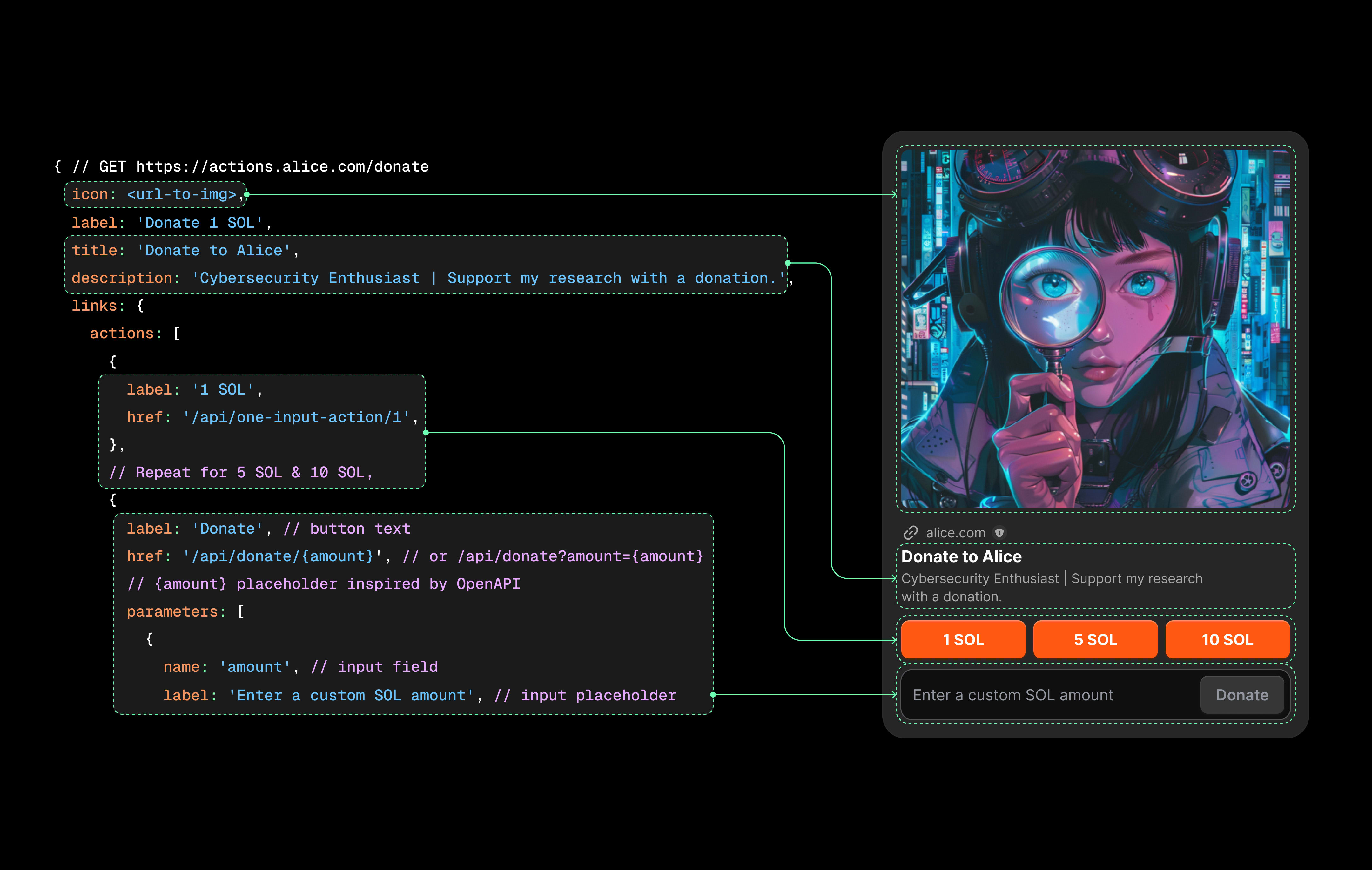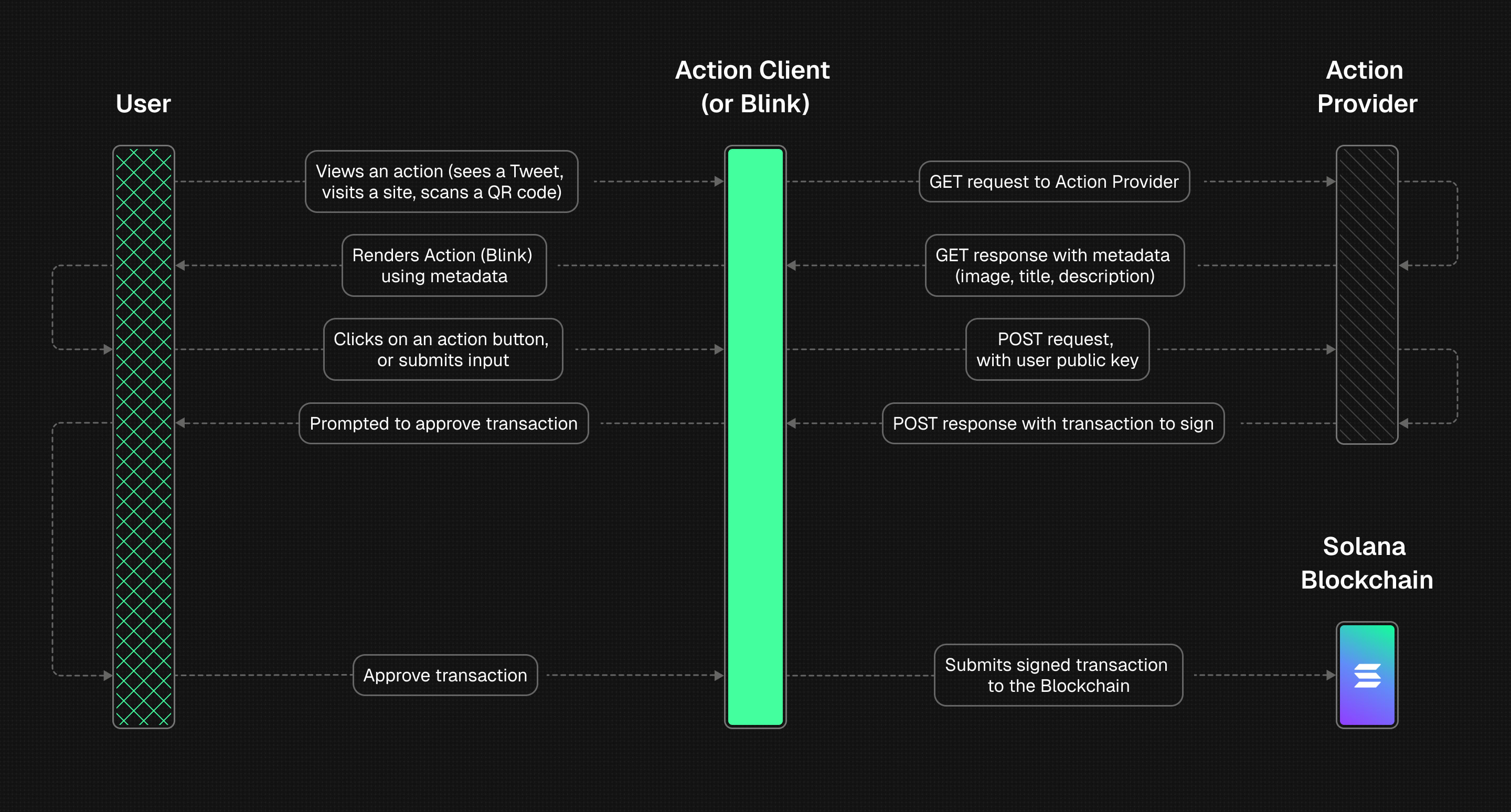Key Benefits
Think of your blink providers as hosted endpoints, that you provide for devs to easily integrate with your service using nothing but an URL.- Rapid Adoption: Enable other developers to integrate your service in seconds by sharing a simple link, while you retain full control over the blink’s behavior.
- Consistent Delivery: Guarantee that your service’s logic and design principles are enforced across all implementations, no matter where your blink is used.
- Seamless Updates: Update your blink’s functionality or UI once on your backend, and see changes reflected instantly everywhere it’s embedded—no SDK versioning required.
Concept
Blink Providers are APIs that deliver signable transactions and messages. Blink Clients determine if URLs conform to the Actions spec and introspect the underlying Blink Provider APIs to construct interfaces for them. Blinks, or Blockchain Links, are hosted at URLs and are sharable with this URL. They are built from the following components:
Blinks, or Blockchain Links, are hosted at URLs and are sharable with this URL. They are built from the following components:
- A URL scheme for identifying Blink Providers. There are three ways this can work—explicitly sharing an Blink URL, sharing a link to a website with a properly-configured
actions.jsonfile, and embedding an Blink URL in aninterstitialsite. - A
GETroute that interacts with the Blink Provider. It can send aGETrequest to the URL and receive aGETresponse in return to present the client with human-readable information. - A
POSTroute that interacts with the Blink Provider. It can send aPOSTrequest to the URL and get a response back to construct transactions, sign them, and submit them to the blockchain.

What’s Next?
Ready to dive in? Here are three paths to get you started!Beginner
Want to get started? Let’s build your first blink together! Follow our step-by-step tutorial to see it in action.
Advanced
Not your first rodeo or need more complex solutions? Check out our guides section for in-depth examples and best practices.
Freestyler
Prefer to experiment on your own? Clone our starters and start building right away.

